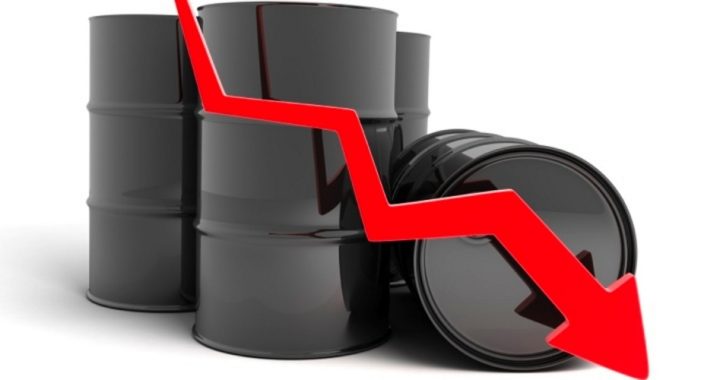
With West Texas Intermediate (WTI) crude oil dropping through $35 a barrel on Monday, the ramifications and implications are piling up. This is the first time since 2009 that WTI has traded that low. Prognosticators are predicting it won’t be the last.
OPEC’s determination to maintain market share while squeezing marginal producers (primarily in the United States) has been buoyed in recent days with news that the high-yield (read: high-risk) bond market has caved. Many of those bonds have been issued in past years by energy producers seeking cheap capital to exploit new projects now available through advances in fracking technology. According to the International Energy Agency (IEA), OPEC (primarily its leading exporter, Saudi Arabia) is showing “renewed determination” to maintain its market share regardless of the impact on price:
As inventories continue to swell into 2016, there will still be a lot of oil weighing on the market. [OPEC’s decision] appears to signal a renewed determination to maximize low-cost OPEC supply and drive out high-cost non-OPEC [read: American producers] production — regardless of price.
Over the last 12 months the price of crude oil (as measured at the New York Mercantile Exchange — NYMEX) has dropped by 46 percent. The August rebound didn’t last, as supply continued to overwhelm demand and is likely to continue to do so. Adam Longson, an oil analyst with Morgan Stanley, said, “While the market is oversupplied, as it should be for much of 2016, there is no intrinsic value for oil.” In layman’s terms, Longson is saying that the price of oil could confirm Goldman Sachs’ prediction that crude could drop to $20 a barrel before finding its “intrinsic value.”
In some markets, it’s nearly there. Heavy crude prices are already below $30 a barrel and dropping. Thicker, blacker, heavier oil — high in sulfur — is more difficult, and expensive, for refineries to refine into finished product. Mexican crude, for example, traded at $27.74 on Monday, while Western Canada Select (the so-called Canadian “tar sands” oil) traded at $21.37 a barrel, the lowest in almost eight years.
Bitumen, a heavy, black, viscous oil, currently trades about $13 a barrel, a drop of more than 80 percent just since June 2014.
While all eyes are on WTI and Brent (traded in Oklahoma City and London, respectively), most refineries pay less, according to Torbjoern Kjus, an oil analyst at Oslo’s financial services company DNB ASA: “Most places in the world … a lot of producers … they don’t really get the Brent price [or] the WTI price. It’s really a dramatic situation that really cannot continue for a very long time for many producers.”
One of those producers — the second-largest natural gas producer in the world — is suffering mightily, and its suffering could get even worse. Chesapeake Energy, a massive oil and gas producer second only in size to Exxon Mobil, has asked for help in managing its $11.6 billion in debt. Chesapeake’s cash reserves have dropped precipitously, from $4.1 billion last December to just $1.8 billion in September (more recent figures aren’t available). The company has hired outside experts to come up with strategies to keep the company solvent and avoid default while playing the waiting game — some call it a game of “chicken” — with OPEC.
Evercore Partners, which specializes in mergers, acquisitions, divestitures, public offerings, and the like, also specializes in survival techniques for companies such as Chesapeake. Low interest rates (thanks to the Federal Reserve) and the fracking revolution enticed decision-makers at the top of the company to splurge, issuing wave after wave of high-yield bonds to take advantage of what appeared to be a never-ending flow of opportunity in the oil and natural gas business. Now it is attempting to off-load some of those promises to repay by exchanging them for equity in the company. Chesapeake is also trying to find a market to sell some of its less profitable properties to lessen its debt load and rebalance its financial statement.
In the meantime, its stock has lost nearly 80 percent of its value this year, while its bonds that are due to be redeemed in 2020 are selling in the aftermarket at 29 cents on the dollar.
Chesapeake isn’t alone as SandRidge Energy, Midstates Petroleum, and Halcon Resources have implemented similar survival strategies.
One unexpected beneficiary, surprisingly, is Walmart. After seeing its stock get hammered following a poor outlook report, prominent professional investors are now buying the stock as an “energy play” in a declining market. Not only is Walmart seeing significant energy savings with its 6,500-truck delivery fleet, it’s also enjoying a resurgence of its core customer base — those who earn about $35,000 a year — who are spending about 80 percent of their gas savings on goods and services. Traffic to its stores has rebounded nicely, increasing in each of the last four quarters. As the price of oil has dropped, Walmart stock (WMT) has rebounded, from $56.30 in early November to $60 on Tuesday.
Like an ocean liner, it’s difficult for the downside momentum in oil and gas prices to reverse itself anytime soon. Companies such as Chesapeake are on survival mode while Walmart is enjoying the ride.
A graduate of an Ivy League school and a former investment advisor, Bob is a regular contributor to The New American magazine and blogs frequently at LightFromTheRight.com, primarily on economics and politics. He can be reached at [email protected].



